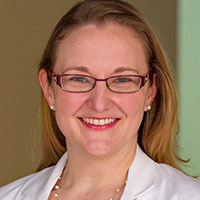New Patient Appointment or 214-645-8300

Diana Diesen, M.D. Answers Questions On: Birth Defects (Congenital Anomalies)
-
Is surgery typically the first-line treatment for children with birth defects?
-
It depends on the condition and how sick the child is. For instance, for conditions such as intestinal atresia – a potentially fatal intestinal malformation in which there’s not one solid tube from the mouth to the anus – surgery is the only option.
Other conditions, however, can be treated with medicine first and treated surgically only if that medical treatment doesn’t work. Necrotizing enterocolitis – a bowel infection that primarily affects premature infants – is a good example.
Our first line of defense is to try to prevent it. If a child still develops it, we give antibiotics and support him or her medically as best we can. If necrotizing enterocolitis progresses to the point where there’s a hole in the intestine, then the child needs surgery. It really depends on how sick the child is.
-
Does your team know about fetuses diagnosed with congenital conditions at UT Southwestern prior to their delivery?
-
In some cases, yes. Certain lung and abdominal abnormalities, for example congenital diaphragmatic hernias (a hole in the diaphragm present at birth), often are visible with prenatal ultrasound imaging.
Through the fetal center, in partnership with Neonatology, we counsel pregnant families whose babies have potential problems seen on prenatal ultrasound.
Knowing about congenital issues prior to delivery gives us the opportunity to talk with the family ahead of time. We tell them what to expect after the baby is born, educate them about the treatment options, answer their questions, help prepare them for whatever treatments may be necessary, and help reassure them during what can be a very stressful time.
It’s important to note, however, that because many congenital conditions aren’t visible with ultrasound – and not all expectant mothers receive prenatal ultrasound imaging – doctors often aren’t aware of these issues prior to delivery.
-
Do all babies with operable birth defects need surgery right after birth?
-
No. While some babies with operable congenital conditions do require surgery soon after birth, others can wait.
For certain conditions, we might observe the child, see how he or she does, and consider surgery later in life. It depends on the condition and how well the child is doing.
For instance, infants born with cystic pulmonary airway malformations (CPAMs) – cysts or masses in their lungs – may be taken to the OR soon after delivery if they’re having trouble breathing or eating. But if babies with congenital CPAMs are breathing and eating fine, we may opt to surgically remove those malformations later, sometime during the first year of life.